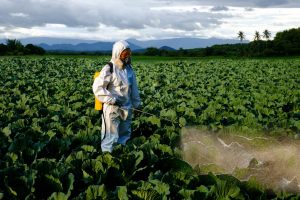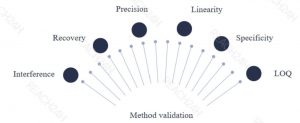Issues to Note In China\’s Pesticide Enterprise Standards
Pesticide enterprise standards (QB) are standards prepared by enterprises on product quality specifications and testing methods, which play a very important role in China’s pesticide registration. Therefore, storage stability tests and product quality tests in pesticide registration should be carried out according to such product enterprise standards.
We sorted out and summarized the matters of concern in the process of compiling enterprise standards, to help the enterprises compile qualified stability tests and product quality test reports, and to successfully complete the pesticide registration.

Nine Parts to Be Included in the Standard
Enterprise standards generally include nine parts: cover, basic information of active ingredients, foreword, scope, normative references, technical specification, test methods, product acceptance, and shelf-life, as well as information about marks, labels, packaging, storage, and transportation.
-
Foreword
The preparation party of the enterprise standard shall be the same as the applicant for pesticide registration.
-
Normative references
Enterprise standards must refer to and conform to the latest national standards and should list all the cited documents.
-
Active ingredient information
The identification information of active ingredients should be accurate, such as the Chinese name, chemical formula, structural formula, molecular weight, melting point, and other basic information. The active ingredients should be clearly defined if isomers exist.
-
Technical specification
- It mainly includes quality control parameters and requirements. Quality control parameters shall be defined in accordance with the Data Requirements of Pesticide Registration (MOA Announcement No.2569) and NY/T 2989-2016 Guidelines on Developing the Specification of Pesticide for Registration. For formulation types not covered in the above documents, the control parameters can be determined with reference to FAO/WHO (Food and Agriculture Organization/World Health Organisation) international standards or consult with relevant experts.
- If the active ingredient contains an isomer, and the common name does not define the mixture for registration, the proportion of the isomer should be determined in the control parameter The ratio of isomers in the formulation should be the same as, but not directly referred from, that in the technical materials.
- Technical specification requirements for relevant impurities in the products.
- If the active ingredient exists in the form of some kind of salt, the content of the active part and the paired counterion should also be marked.
- The index for product specifications should be reasonable.
In general, the technical materials should specify the minimum content of active ingredients. The content of active ingredients or signature active ingredients in botanical technical material consists of the nominal value and the allowable range, which is ±25% of the nominal value.
The active ingredient content of the formulations should consist of the nominal content and the allowable range, not applicable for microbial and botanical pesticide formulations. While for microbial formulations, the minimum content of active ingredients shall be specified; for botanical formulations, the requirements for active ingredient content are the same as those in botanical technical materials.
-
Requirements for harmful solvents in emulsifiable concentrate formulation.
Benzene, toluene, xylene, ethylbenzene, methanol, N, N-dimethylformamide, and naphthalene in pesticide EC should meet the requirements of HG/T 4576.
-
Choose the right test method
Based on the product characteristics, select the appropriate method for testing according to the requirements of the guidelines.
The active ingredient test report should contain information such as typical spectrum, retention period, etc. The technical materials shall be sampled according to 5.3.1 in GB/T 2605-2001. The sampling of liquid formulation shall be carried out according to the method in 5.3.2. The sampling of solid formulation shall be carried out according to the methods in 5.3.3.
For the low-temperature stability test, emulsion and homogeneous liquid formulation shall be tested according to the method in Part 2.1 of GB/T 19137, and suspension formulations shall be tested according to the method in Part 2.2.
Regarding the accelerated storage test, the selection of heating storage temperature is related to the product characteristics, which should also match the heating storage period.
Method Validation Report, the Most Important Part
The preparation instruction of enterprise standard is used to demonstrate and explain the scientific validity of the purpose, basis, index determination, and test methods of the standard. It includes five batches of raw data, raw spectra, and method validation, wherein the method validation is the most important.
The method validation can be done by enterprises or by test agencies. It is necessary to examine the specificity, linearity, precision, recovery, and non-specific interference of the analytical method for the content of active ingredients, impurities, and other limiting components such as safety agents and stabilizers to determine whether the method is suitable for the analysis of the substance. If the currently valid national standards or industry-standard methods are used, method validation is not required.
The method validation report shall meet the requirements of NY/T 2887-2016 Guidelines on Validation of Analytical Methods for Agrochemicals. The following is a brief description of the requirements for the method validation of the active ingredients in the technical materials and formulations.

Table 1 Summary of the required validation
| Active ingredient (technical material) | Active ingredient (formulation) | |
| Specificity | 1. Spectroscopic methods are commonly used to identify and analyze active ingredients based on the characteristics of substances to be tested. When the spectroscopic method is used, the active ingredients can be clearly identified based on the spectra.
2. Interferences from impurities in active ingredients should not exceed 3% of the total peak measured for the target analyte. If the active ingredient is optically pure, the analysis method should also meet this requirement. |
1. If the formulation contains more than one active ingredient, the method of analysis should be able to determine each of them.
2. When other substances (including impurities and other active ingredients) exist in the formulation, the interferences from other substances should not exceed 3% of the peak area of a single active ingredient or the sum of the peak areas of all active ingredients. If the active ingredients are specified as optically pure, the analysis method should comply with this requirement. 3. When active ingredients contain multiple isomers or similar substances, the method should be able to identify each of them. |
| Linearity | The concentration range of the linearity should cover ± 20% of the analyte concentration at normal detection.
Duplicate (independently weighed samples) determination at 3 concentrations or single determination at 5 concentrations is required. Linear correlation coefficient ≥ 0.99. |
Same as the technical materials |
| Recovery | Recovery determination is not required. Evaluate by precision and specificity. | Meet the requirement of recovery rate |
| Precision | The relative standard deviation shall be less than 2(1-0.5logC)*0.67 when the sample is determined at least 5 times. C refers to active ingredient content in the sample, calculated as decimals. | Same as the technical materials |
| Non-analytical Interference | No required | Simultaneous determination of the technical materials without additives and the blank sample without technical materials to demonstrate the absence of mutual interference or to quantify the resulting interference and submit chromatograms or other analytical results. |
| LOQ | Not required | Not required |
In addition, it should be noted that the test methods, test conditions, and results in the preparation instructions of enterprise standards should be consistent with the information in the enterprise standards. The trend of the spectrogram in the enterprise standard preparation instructions should be consistent with that in the enterprise standard.
Contact Us
REACH24H Consulting Group has been working on pesticide registration in China for many years. We have rich experience and many successful cases on current new pesticide registration and are skilled in the whole process of pesticide registration, especially the planning and implementation of key steps such as trial efficacy test design, risk assessment, metabolite identification and experiment supervision, which support us to solve difficult problems in the process of pesticide registration in China.
If you have any questions on pesticide registration, please don’t hesitate to contact us.
Tel: +86 (0)571-87006630
Email: customer@reach24h.com
Reference Link
Q&A | Global Pesticide Registration in 2022 | China Pesticide Regulation and Registration
